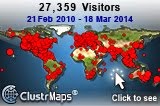The post
Disconnecting, by Jennifer Jones (@injenuity) got me thinking....
Actually, social dynamics, both in and out of the classroom, is not a new topic of thought for me. I am almost constantly assessing and reassessing the social dynamics in the classroom and how I can best direct them.
One thing I have learned is that people are extremely sensitive. Those who seem tough and uncaring are often the most sensitive of all. We all have our ways of protecting, pretending, rationalizing away the things that offend us. Some take on the role of the bully so as not to be bullied. But I believe that just about everyone is deeply sensitive to the people around them and that feelings are easily bruised.
When I was a classroom teacher I spent the first month of school on team-building activities. Integrating with language arts (and even, at times, math) I consciously worked to build a community based on the
TRIBES norms:
•Mutual Respect
•Attentive Listening
•No Put Downs/Give Appreciations
•The Right to Pass
Simple, and yet they cover virtually any problem that might arise. If we all followed them, the world would definitely be on the road to being a happier place, no? One thing I addressed with my classes very early on was how, in order to be able to grow and learn, we must be able to risk, and, thus, in order for any of us to learn, our classroom MUST be a safe place, a community where we can safely take risks.
Now I teach in the computer lab and I don't have the opportunity to build classroom community. The classes at my school are small, and there is only one class at each grade level so the dynamics can be quite intense.
It is not only what we teach but how we manage the classroom that impacts the social dynamics. If I got down to it, this could be an extra-long post, citing example after example of times I think I've gotten it right and times I know I've missed the boat.
Some examples of management decisions that affect dynamics in the lab:
• Do I let students choose their seats? do I let them choose their partners?
I don't have any hard and fast "rules" for how I do things. But during my many years in the classroom, I have picked up a few strategies that work:
For partners -- I have "partner cards" that I keep in my desk drawer. On each card is written one half of a pair. For example: one card says "peanut butter." If you get the peanut butter card, naturally you will look for the person with the jelly card, and that is your partner for the day. The fun of the activity, the randomness and mystery of who your partner will be, gets the partnerships off to a great start. However, I don't leave it to chance. Before I even pass out the cards, we all practice our biggest smiles. I remind them that we never show disappointment when we discover our partner because it might hurt someone's feelings. Kids NEED the reminder. I do believe that most times they don't want to hurt another's feelings - they just aren't thinking about the other person.
Another Example:
In my afterschool blogging class this year, I left things very unstructured. I always gave an assignment, but left it up to the students to decide if they wanted to do that or something else related to their blog. One day's assignment was to leave comments, and some did, on a few blogs. Only one student left a comment on every blog in the group. And, of course, I commented on every blog, at least a few times during the class. Several students got comments from real life friends not in the class, parents and student bloggers from other places. I thought all was well.
But on the last day of class, with only a few minutes left, one girl came to me and said, with disappointment on her face, "I only got a comment from ______ (the student who had commented on every blog)." Thinking quickly I wrote all the students names on pieces of paper. I told them they had one final assignment - to pick a name and write a comment on that person's blog. Randomly, the disappointed girl's name was chosen by the one person who had already commented on all the blogs. It happens. But what surprised me was how excited all of the kids were about getting a new comment from someone in the class. It turned out to be a great ending activity for the class. Something about the randomness and the mystery of who picked who's name...
I know how good it feels to get comments on my blog, too.
There is something about being recognized. Receiving a comment shows that someone has read your words or at least looked at your blog, your creation. There is a human need for attention, to be valued or validated, by others.
The
ISTE nets for students recognizes "communication and collaboration" as vital 21st century skills. We need to put our students into situations that push them out of their comfort zones, that give them opportunities to work with different people. We need to help them navigate the murky waters of interacting with others in polite and productive ways. This is difficult.
My Thoughts about Twitter-
In the recent past, there was a spate of blog posts about twitter followers and the blogosphere being an elite cocktail party. I read those posts with great interest, although at the time I did not join in the discussion. What I recognized, through many of the posts and comments I read, was this sensitivity, a need for recognition and validation. I know that I have given a lot of thought to the whole follow/following on twitter. If a real person (as opposed to a spam type follower) follows me, is it impolite not to follow back? I know there are no hard and fast answers to this, and everyone has to do whatever works best for them. Whatever guidelines we follow, we all know, rationally, that we can't become sensitive about twitter. But, nevertheless, people do.
How can we teach our students the finer points of online interaction if we, teachers, are uncertain of them? How can we create classrooms where it is safe to take risks if, as adults, we do not model the values of respecting and appreciating people for who they are, of reaching out to include everyone?
Communication and Collaboration. Why are these so fraught with possibilities for misunderstanding and hurt feelings? What are your best strategies for teaching and classroom management that foster inclusivity in a real way? Are you thinking about yourself or about the other person when you interact on blogs or twitter or wherever you interact online?




